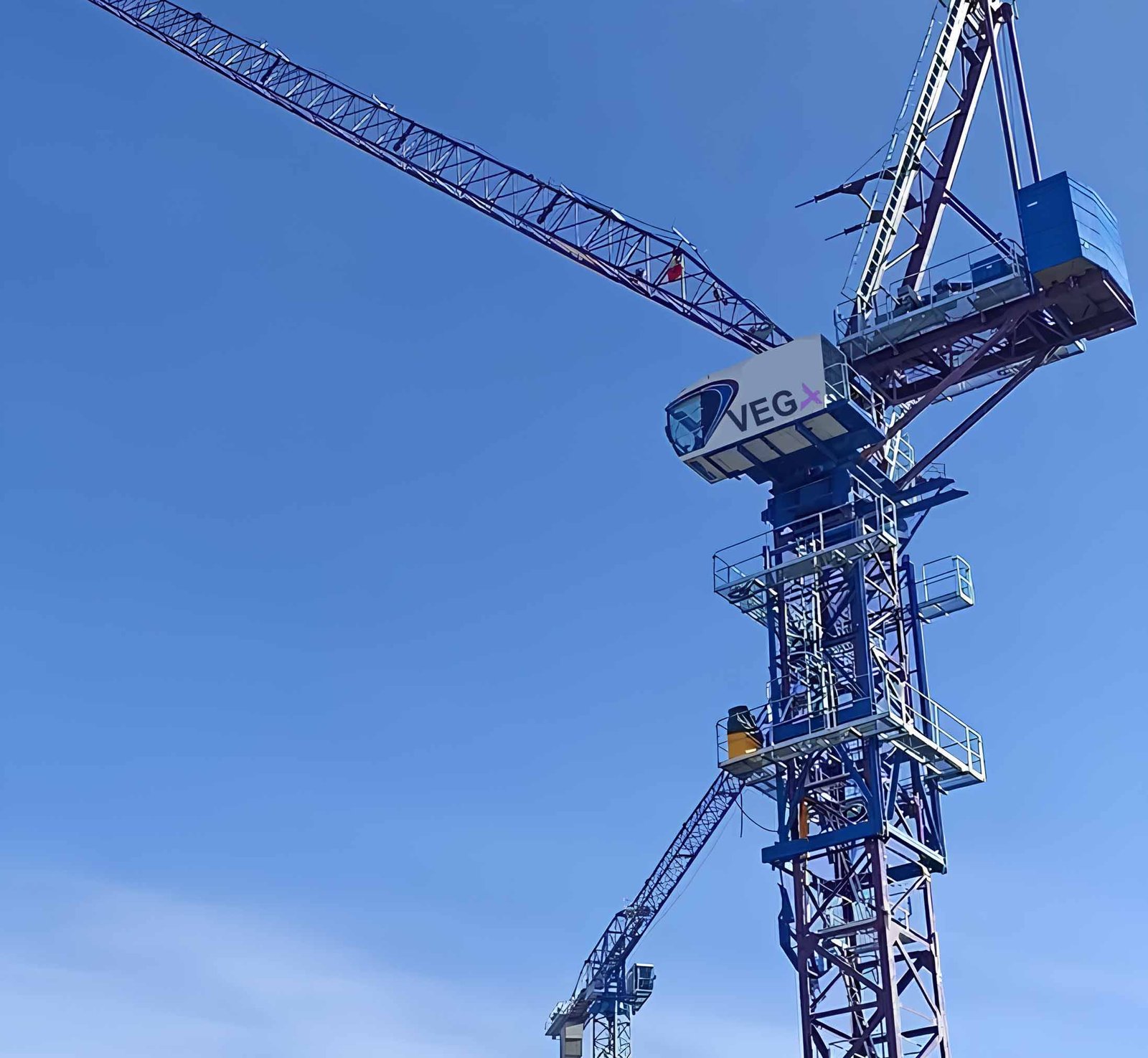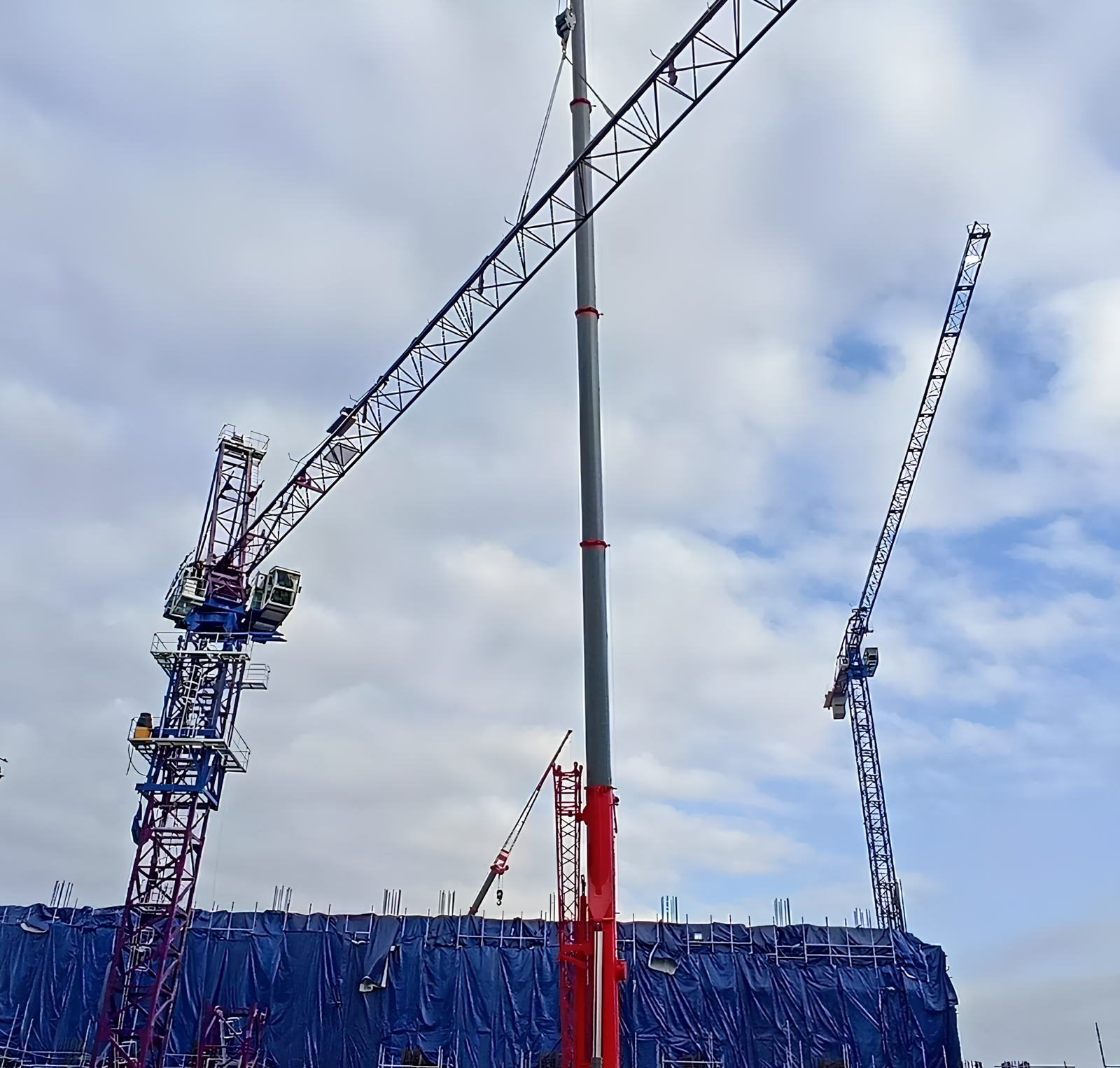
Tower cranes are essential pieces of equipment used in construction, offering the lifting capacity required for building tall structures. These cranes are designed to support heavy loads at great heights and can be classified into various types based on their structure, functionality, and operational requirements.
Tower cranes are designed for lifting heavy loads at heights. Different types, like luffing cranes, offer specific advantages in construction.
Let’s dive into the different types of tower cranes, starting with the luffing crane and how it differs from others.
What type of tower crane is luffing?
A luffing tower crane1 is a specific type of crane characterized by its ability to change the angle of the jib, allowing for increased maneuverability in confined spaces. The jib can be raised and lowered to avoid obstacles, making it ideal for complex construction sites.
Luffing tower cranes are known for their adjustable jibs2, which provide flexibility in maneuvering on tight sites with limited space.

Luffing tower cranes have a unique feature: their jib (the horizontal arm of the crane) can change its angle, allowing it to lift loads while keeping the jib out of the way of obstacles. This feature is especially useful when working in tight or congested urban environments. For example, on a construction project in a crowded city, the luffing crane's ability to lift heavy materials without interfering with other buildings or structures made it the ideal choice. The jib can move from a low to a high angle, enabling the crane to lift loads over obstacles and precisely position materials. This makes the luffing tower crane particularly advantageous on complex construction sites.
Features of a luffing tower crane:
| Feature | Benefit |
|---|---|
| Adjustable jib angle | Increases flexibility and maneuverability |
| High lifting capacity | Can handle heavy materials at various angles |
| Compact design | Ideal for tight spaces and urban environments |
What is difference between jib and luffing?
The primary difference between a jib and a luffing jib is in how they move. A jib is a fixed horizontal arm, while a luffing jib can be raised and lowered to adjust the angle, offering greater flexibility.
A jib is a fixed horizontal arm, whereas a luffing jib adjusts its angle for more versatility in lifting materials.

The jib is a key component of any tower crane. It is the horizontal arm that extends from the tower and supports the crane’s hook or lifting device. A standard jib is fixed, meaning it stays at a constant angle during operation. In contrast, a luffing jib can change its angle—typically through hydraulic or mechanical adjustments. This ability allows the crane to adjust its reach and clearance, making it ideal for more dynamic work environments. The luffing feature gives the crane more versatility, allowing it to work in spaces where a fixed jib crane might not be able to reach or maneuver around obstacles effectively.
Key differences between jib and luffing jib:
| Feature | Jib | Luffing Jib3 |
|---|---|---|
| Angle | Fixed, does not adjust | Adjustable, can raise or lower |
| Flexibility | Limited, rigid structure | Highly flexible, allows for precise positioning |
| Use Case | Suited for open spaces | Ideal for tight spaces and urban sites |
What is a luffing tower crane?
A luffing tower crane is a type of tower crane that uses a luffing jib to adjust the angle of the jib, allowing for improved load management and more efficient operation in crowded or constrained environments.
A luffing tower crane uses a movable jib to adjust its angle, improving load handling and offering flexibility on complex job sites.

Luffing tower cranes are often preferred on construction sites where space is limited or when there are obstacles to avoid. The crane’s jib can be raised or lowered to adjust the lifting range. This capability makes it ideal for projects in urban areas where the crane must avoid nearby buildings, power lines, or other structures. One memorable project I worked on required a luffing tower crane to maneuver between buildings while lifting heavy beams and steel frames. The adjustable jib allowed the crane operator to lift materials without obstructing nearby structures, which was crucial for maintaining safety and workflow on-site.
Benefits of luffing tower cranes:
| Benefit | Reason |
|---|---|
| Maneuverability | Jib can adjust to avoid obstacles |
| High load capacity | Suitable for lifting heavy materials |
| Flexibility in confined spaces | Ideal for tight, urban job sites |
What are the different types of tower cranes?
Tower cranes come in various types, each designed for specific types of work environments. The primary types include flat-top, luffing, and hammerhead cranes.
Tower cranes come in different types, including flat-top, luffing, and hammerhead, each designed for specific needs on construction sites.

There are several common types of tower cranes, each with its advantages. The flat-top crane, for instance, features a smooth, flat structure with no overhanging elements, making it ideal for high-rise buildings where other cranes might get in the way. The hammerhead crane, on the other hand, has a horizontal arm that remains in a fixed position, ideal for lifting heavy loads over long distances. Luffing cranes are more versatile, with adjustable jibs for maneuvering loads around tight spaces. Each of these crane types has a unique set of advantages based on the project’s specific needs, whether it’s the need for flexibility, heavy lifting, or operation in a constrained environment.
Types of tower cranes:
| Crane Type | Ideal Use Case |
|---|---|
| Flat-top crane | High-rise buildings with limited space |
| Hammerhead crane | Heavy lifting over large distances |
| Luffing tower crane | Urban or tight spaces with obstacles |
What does luffing mean in cranes?
In crane terminology, "luffing" refers to the ability of the crane's jib to change its angle relative to the horizontal, providing the crane with increased maneuverability and flexibility in operation.
Luffing refers to the adjustable angle of the crane’s jib, allowing for greater flexibility and safety on complex job sites.

Luffing is a hydraulic or mechanical action that changes the angle of a crane’s jib. By adjusting the angle, the crane can better maneuver around obstacles and reach locations that a fixed jib might not be able to. In practice, this means that a luffing crane4 can work in congested spaces, such as between buildings or near other cranes, without risking collisions or limiting its lifting capabilities. I recall a project where the luffing feature was key to positioning heavy structural elements while avoiding nearby buildings. The crane’s ability to lift loads at varying angles made the entire operation more efficient and safer.
Key features of luffing in cranes:
| Feature | Benefit |
|---|---|
| Adjustable jib angle | Enables movement in confined spaces |
| Increased lifting flexibility | Allows for precise load placement |
| Hydraulic/mechanical system | Smooth and efficient angle adjustment |
Conclusion
Tower cranes come in various types, with luffing cranes standing out for their adjustable jibs, which make them ideal for tight spaces and complex construction sites. Understanding the different crane types and their capabilities is key to selecting the right equipment for any project.
-
Exploring the advantages of luffing tower cranes can help you understand their unique benefits in tight construction spaces, enhancing project efficiency. ↩
-
Understanding the role of adjustable jibs in tower cranes can reveal how they contribute to safer and more efficient construction projects. ↩
-
Exploring the advantages of a luffing jib can help understand its flexibility and efficiency in dynamic work environments, especially in tight spaces. ↩
-
Exploring the advantages of luffing cranes can help you understand their efficiency and safety in tight spaces, crucial for complex projects. ↩






